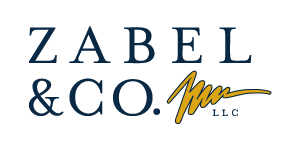Startups and small businesses often face great pressure to quickly generate income. That said, is making consistent revenue the key to enduring business success? Or is it better to create sustainable growth for the future, even if it means making sacrifices in the present?
The answers aren’t quite as cut and dry as you may expect, and they largely depend on the current stage and ambition of the business. Generally, though, after a business has established its model for revenue growth, it’s better served by scaling to create a durable, broadened business model.
Revenue vs. Profitability
While the two words may appear to define the same thing, “revenue” and “profitability” imply different money-earning approaches.
“Revenue” (or “gross revenue”) refers to the income that your business generates through its normal operations. Sales, fees, charges, donations, and other transactions represent revenue streams. However, earning more revenue doesn’t necessarily mean a company is maximizing its potential.
“Profitability,” on the other hand, measures how much income your business makes after deducting its typical expenses and business costs. In addition to setting a price for the goods or services it offers, a business needs to control and limit the expenses it incurs in making or providing its product. That reflects its potential for sustained growth: its scalability.
Four Business Stages
The lifespan of an independent business can be laid out in four general stages:
- Launch: The official start of business operations
- Growth: Establishing a system for revenue and income
- Sustainability: Achieving stability through efficiency and risk management
- Scalability: Increasing expansion and volume of activity or transactions
Most businesses follow this general flow of development. Some are content to stop when they’ve reached a level of sustainability, while others seek to expand their potential and explore scalability.
Comparing Growth and Scalability Mindsets
Business owners all want to achieve a level of success, but where they go after they’ve reached that point depends on their ambition and risk tolerance.
Choosing Growth
Every business owner wants to grow, and some hit a point of comfort and profitability that makes them happy. They’ve hit a work-life balance they’re satisfied with, filled an in-demand niche, or provided services to a client base that keeps coming back.
In any case, for the owners of these types of businesses, staying profitable is enough. There may be trade-offs, like working longer hours and limiting expenses, but it’s certainly possible to maintain a satisfactory life.
Choosing Scalability
Other business owners want to increase their business value. They seek to produce more growth by capping expenses, increasing efficiency, and adding more features or capabilities. They also build internal processes to streamline production and customer service, hiring more employees and attracting more investors to facilitate expansion.
The scalability mindset is a framework for keeping a business relevant long after its founders have moved on. It’s a method to track customers through the entire cycle of using their products, year after year, one that involves significant reinvestments of work and capital for extended periods.
Which Mindset Is Better?
Neither mindset is inherently better or worse than the other. Millions of small businesses in America have served their local communities without scaling upward and enjoy staying within those parameters.
That said, the American model of entrepreneurial success is driven by economies of scale. Business dynamics focus on competition, innovation, reinvestment, and collaboration. Growing in scale has an impact on job creation, technological progress, access to capital, and global presence.
Strategies for Scaling Profitability
How do you start thinking in terms of scalability for your small business? Here are a few steps to take in the transition:
Set Realistic Goals
Document your ability to increase workloads, budgets, and staff to meet scalability needs, then set reachable benchmarks for your products and your customer base.
Adjust Your Work Standards
Take a look at your processes to evaluate your production efficiency. Wherever possible, set prescribed routines and streamline operations to save money, time, and energy.
Build a Collaborative Network
The small business community has specialists, colleagues, resources, and potential collaborators who regularly help each other meet their needs. Start with local contacts and grow your business network organically.
Re-Establish Your Priorities
You started your company because you wanted to do what you’re best at. And now that you’ve reached a modicum of success, you need to start thinking about your product or service as something the world needs. Build your aims around that global reach.
Revenue Is for Now — Profit Is Forever
Generating more revenue is important, but it’s not necessarily the smarter way to keep your business relevant or operational. By learning how to retain and grow income across different revenue streams, you can build a business that’s profitable, influential, and sustainable. Connect with Zabel & Co. today to get started.

